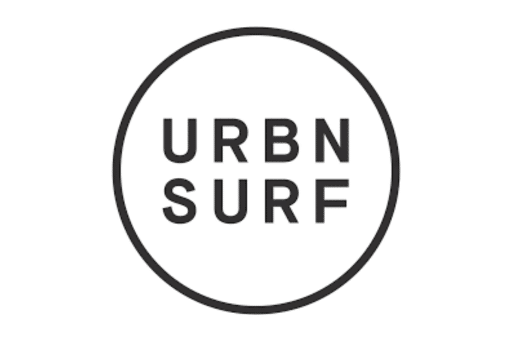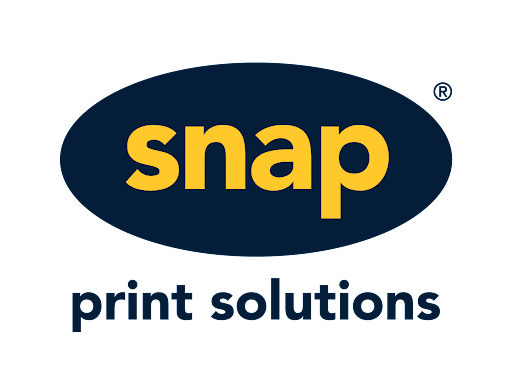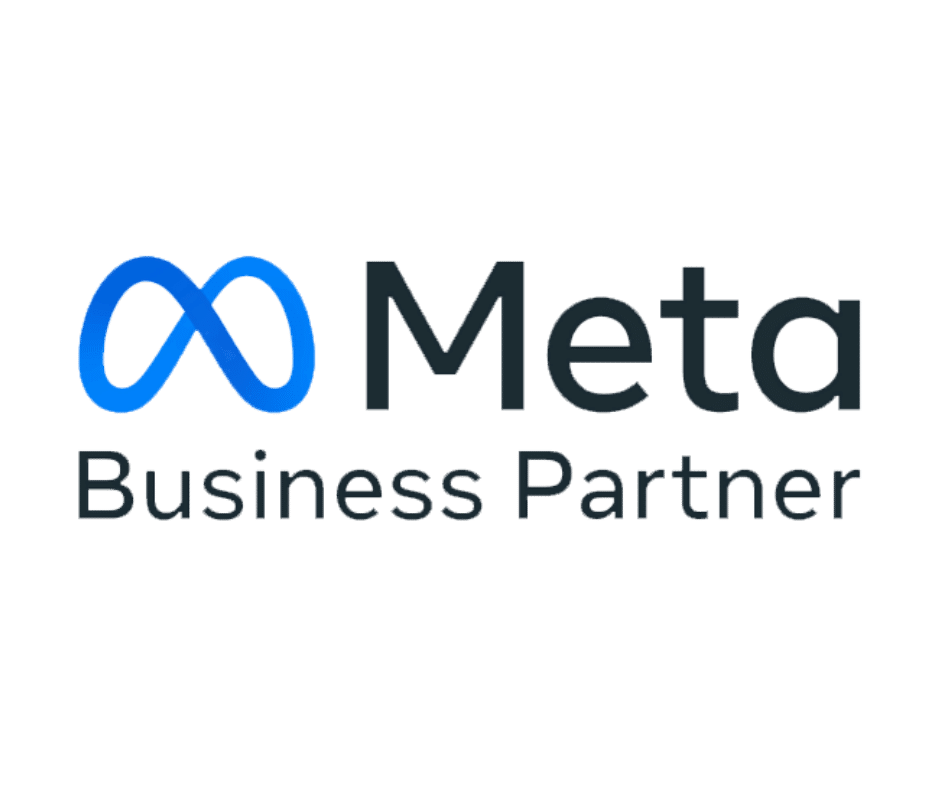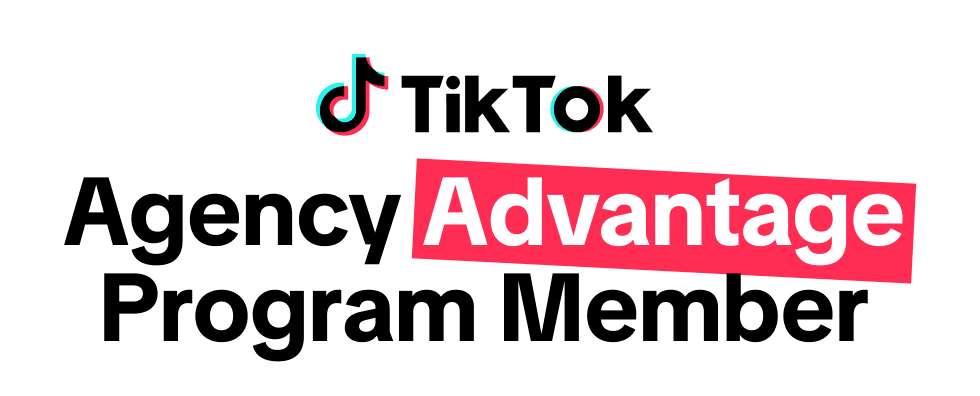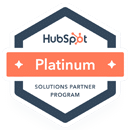Mastering B2B Email Marketing
Episode Description:
Email marketing specialist, Eshita Durve reveals how B2B businesses can make the most out of email and automation. She discusses how best to nurture leads, 5 ways to segment your database, and the best email automation software for your business.
Key Takeaways:
- What makes a successful lead nurturing campaign?
- What are you trying to achieve when sending an email to your database?
- What are the 5 ways to segment for emails?
- What are the biggest mistakes people often make when sending emails?
- What is the best email/automation software for your company?
Additional Resources:
Featuring:
About the Guest:
Eshita Durve leads the in-house Marketing team at award-winning Australian marketing agency, Rocket. As a marketer with a strong background in sales, she is passionate about using marketing technology to drive tangible business outcomes (Read: Eshita is not into fluff metrics).
With 10 years of driving results both in-house and agency-side, Eshita was recently recognised as a finalist in the marketing category at the B&T Women in Media Awards.
Podcast Summary: B2B Email Marketing
Email and automation specialist, Eshita Durve, shares practical tips to building a successful email marketing strategy for your B2B business.
What is the main difference between B2B and B2C email marketing?
B2C email marketing typically focuses on moving the sales transaction forward. B2C emails are often hyperpersonalised to the recipient and often sent from the “brand”. B2B emails, on the other hand, are usually sent from a specific person from within the business and therefore take on a different tone vs B2C emails.
How do you build a database and when do you start nurturing leads?
Good email marketing strategies involve building databases off the back of a solid content marketing effort that may involve ebooks, downloadables, checklists, webinars, and the like. A successful email marketing strategy would then kick-off as soon as the contact has converted on your website.
The main objective when sending an email to your database is to drive action. This can be achieved by delivering emails that are a combination of HTML ”branded” and plain text. Heavy branding is appropriate for immediate response emails but a more personalised approach should be used for emails further along in the automation.
Every B2B business email you send should ultimately focus on providing valuable and relevant content that encourages engagement and conversions.
Many businesses would spend hundreds of dollars to collect an email address through paid media but somehow miss the mark when it comes to nurturing their contacts further down the funnel. The value of a business’ database is high if you think about it from a cost-per-contact lens, which is one of the reasons why email marketing consistently ranks as the highest channel for ROI.
Email list segmentation best practices
It's important to balance personalisation and segmentation with getting content out the door. Over-segmentation can become a problem when everyone is receiving the same content, but having a good list and good segmentation within your database is crucial for email deliverability and engagement.
For example, contextualising your communication based on how your lead got into your database and how they’ve engaged with your content or website previously is a powerful way to drive up email marketing metrics.
Here are five practical ways to segment your email marketing audience:
- Lifecycle Stage: Where they are in your marketing funnel
- Contact Type: When the lifecycle stage fails you, segment based on if the contact is a partner, a past client, a closed lost contact etc
- Behavioural data: Have they downloaded an ebook, attended a webinar, or visited a specific website page?
- Service Type: What are they interested in - if you provide more than one kind of service?
- Demographic data: Their age, location, company size, job role etc.
Ensuring that your email list is clean and free from duplicates is crucial to avoid spamming your audience and potentially losing their trust. It's also important to periodically review and update your segments to ensure they still make sense and are relevant to your current marketing goals.
If the recipient doesn’t get value from the content, don’t send it.
What are the biggest mistakes people often make when sending emails?
One of the biggest mistakes people often make when sending emails is not segmenting their audience properly and sending irrelevant content to their subscribers.
Another mistake is not having a clear call-to-action in the email or sending too many CTAs that confuse the recipient.
Additionally, not sending emails regularly can result in subscribers forgetting about your brand or losing interest. It's important to maintain consistency and send contextual emails that address current industry issues and provide value to your subscribers.
What is the best email/automation software for your company?
The best email/automation software for your company will depend on your specific needs and budget, but it's important to consider factors such as segmentation and automation features, as well as the price per contact. Mailchimp is a great option for start-ups, while Active Campaign can work well for medium-sized businesses.
Hubspot is the top choice for those serious B2B businesses about investing in a long-term email and CRM marketing platform. Ultimately, the right choice will depend on your business's situation and ability to generate a good ROI from the software.
If you're ready to take your B2B email marketing to the next level and drive more engagement and conversions, contact us here to see how the experts at Rocket can help!
Transcript
James Lawrence: Welcome back to the Smarter Marketer Podcast. Today I am here with Eshita Durve. So Eshita was originally on the pod where she talked about how to win marketing awards. But today she is here to talk about B2B email marketing in 2022. Eshita is an absolute authority on the subject matter. She has written over 1000 B2B emails that have gone to well over 2 million recipients around Australia over the last eight years, doing work in professional services, training, insurance, finance and much, much more. She's been Rocket's in house Marketing Manager since 2019, where she also heads up our email and content marketing strategies for clients. Prior to that, she was at Sales ITV, one of Australia's leading sales training and education organisations. Eshita, welcome back to the Pod.
Eshita Durve: Thank you, James. I'm happy to be back.
James Lawrence: It's been too long since we've had you on, so I'm glad you are back.
Eshita Durve: Very flattering introduction. Thank you.
James Lawrence: I think just before we rip in; we wanted to keep the focus on B2B email marketing. Like, just the distinction, B2B versus B2C. Is it as clear as that? Or is it more just a type of sales transaction that we're trying to change and try to move?
Eshita Durve: I think for most part it is the sales transaction that you are trying to move. When you are speaking from a B2C context, even though there is a lot more personalisation these days, your tone is quite different from a B2 B context. In a B2B context, there's a lot of relationships involved and there's the brand involved as well, whereas in B2C, it's usually just the brand that you're talking to, not a specific person. And that's the main difference between the two.
James Lawrence: I think when a lot of your experience is in trying to have people reach out to an organisation that they've had some touch point, they've downloaded something, they've maybe been a past customer, it's a larger ticket item, consulting, professional service or something like that. When I think if we think of hard nose B2C, not necessarily B2B, B2C, but kind of transactional, it's ecommerce, it's sending emails every day, it's return on investment type metrics. And I think we're talking about how do you nurture a lead to move them from being possibly interested in a more complex product or service through to actually buying it. Right.
Eshita Durve: Maybe not buying it, but at least making an inquiry to buying it, reaching out.
James Lawrence: I don't want to eliminate the salesperson in the buyer's journey,
Eshita Durve: But yes, definitely moving them lower in the funnel.
James Lawrence: Yeah, cool. Let's talk about it. How do you build an email marketing strategy? How do you build a database? How do you get the right message to the right person at the right time? How do you measure of success?
Eshita Durve: So, four questions, right?
James Lawrence: Four questions in one, a shadow. We're going hard today.
Eshita Durve: Okay, we'll start with the first part, which is how do you even build that email database? Now, that comes further up in the funnel. It depends on the content that you put out there. One of the easiest ways is via content marketing. I call it easy, but it's the most convenient way. It does involve a lot of time, effort, and energy, and it's well worth it. So if you put together good ebooks, good downloadables, good checklists, introduce new webinars within your content marketing strategy, have a simple subscribe form on your website, but then don't just leave it at the subscribe form. Actually send emails off the back of it. So all of these ways can be used to generate your database.
James Lawrence: How important is that? I think we'll often come across clients that have acquired email addresses over a period of time, they may have sent to them previously, haven't sent for a while. How important is it from when you get that email address to actually start nurturing?
Eshita Durve: I think it needs to be an immediate start. I actually don't think it, I believe it, so it has to be an immediate start when it comes to email marketing. What I find quite interesting about not just our clients, but any other business that I speak to about email marketing is that they're willing to spend, say, $50 to $200, to even $600 sometimes to get an email address, which is quote, unquote, a lead for their business. And they are willing to spend that through paid media. But then they've got this collection of email addresses, collection of contacts just sitting in their CRM and collecting dust. And when you start measuring the value of an email address at say, $100 per email address, and then you look at your database, only when you put in that lens do you realise the value of your database, right? So if you have 5000 contacts, that may be a $50,000 worth database that you have. So not email marketing to them is a huge opportunity cost that most businesses may be missing out on.
James Lawrence: Yeah. Consultants here, which is, I guess, a website authority, creator of content for marketers out of the UK. They publish a report every year. And almost without exception, email marketing consistently ranks as the digital channel that gives marketers the best return on investment. And I think there is this misconception, I think often not even in marketing departments, but potentially outside of that email marketing is spam and that it doesn't work and that it doesn't play the role it once did when the data just doesn't support that argument and it's definitely not what we say. Is that fair?
Eshita Durve: That's absolutely fair. I think email has got a bad rep because of the assumption around anyone can write emails and send emails. Because we use email on a daily basis, I believe most of our audience does. I would be surprised if someone doesn't use an email address, but because everyone writes emails, they believe that email marketing would require the same skills. And that's not true. When we write emails, we write emails on a one on one basis. It automatically becomes a very tailored concept. When we do email marketing, we are trying to communicate on a mass level, right? On that mass level, on that broadcast level, we want to achieve certain outcomes. We want to achieve the personalisation, we want to achieve a connection with the person whom they're sending an email to, and we want to achieve a next step from their end. And that requires a specialised skill. When you're communicating at mass and still trying to achieve that personalisation.
James Lawrence: Just talk a little bit about your philosophy on database development, I think we all presume that we're talking about users that have opted in. How do we feel about correct sending of email? People that have filled out a contact form but may have checked a box, but haven't really said, I want to join your newsletter. Should we be emailing them? Should we be emailing people that have engaged with the sales rep where it's now a closed lost? Should we be asking for permission there? What's your philosophy on that?
Eshita Durve: So my philosophy when it comes to email marketing is less about database generation. I believe that's more top of funnel work, it's more about database management. So keeping your list clean is 100% a priority. And if there were a silver bullet for email marketing, this would be one of those many silver bullets. Having a clean list, having goods segmentation practices within your database, getting people out of your database when they opt out, when someone responds back negatively to email marketing, which is very possible when you're sending emails to thousands of people, getting them out of your database. If you get autoresponses saying, I have moved jobs, cleaning that database out is so important for both email deliverability and your results from email marketing, which is your click through rate, your engagement, et cetera, et cetera. So that's one part. So keeping the database clean and then sending emails to specific segments.
Eshita Durve: You could send one single email with one single outcome. Say, for example, if you wanted to drive webinar registrations, sending a broadcast email to your entire database is one way, and you'll get a result from it. But if you send the same email to three different segments, say, your current customer, saying in a plain text format from the director of your business, saying, hey, I'm running this webinar, would you like to join? You already have that relationship, develop it. Sending that same email to people who have not downloaded something, they've just subscribed, saying, hi, we're running a webinar, would you like to join? And then giving more details about your brand and the webinar itself. And the third one, say, to someone who has engaged with your content, saying, hi, you've previously downloaded something, I thought you'd find this webinar interesting. We're running this session on so and so date. Would love for you to join. It's the same message, but it's three different tones. It's going to three different segments. Your overall result from the registrations is going to be much higher than just sending one broadcast email saying, we're running a webinar, please join us on XX date. Right. So contextualising your communication is quite important.
James Lawrence: And how do we do that? Because I think that's always been the promise of email, right? It's just personalisation segmentation. We're told don't batch and blast anymore. You don't have a monthly newsletter that goes out. You have emails hitting the right person at the right time with the right message. It's based on them and their journey with your brand, not the reverse. But I often find that that's a real challenge for businesses where it's all well and good to say, you know, hit people with messaging that that works for them. But once you start segmenting, you start finding that you need to have, you know, six pieces of content for your six core verticals that you're targeting, or for your different persona types, and suddenly six becomes twelve, becomes twenty-four. How do you do that? We've got obviously got listeners and big businesses with big budgets and create lots of content with powerful systems. And then you're going to have marketers listening that are doing it all themselves as well as their day job. How do you balance personalisation segmentation with just actually getting stuff out the door?
Eshita Durve: I think over segmentation is a problem in terms of content, not in terms of email. So you just mentioned that if you have six personas, you need to create six types of content. I don't necessarily believe that's the case. I think you could have one overarching piece of content. An example I can give you is in relation to Rocket. So what we do at Rocket is every year we update a version of the Australia's Digital Marketing Guide. It's one guide. It's an overarching piece that has enough information and clear steps that are applicable to all our personas, right? So the point is to take that master piece of content, but when you send it out to those different personas, you tweak the message slightly so it's more relevant to them. Let me talk to you about segmentation.
Eshita Durve: So in terms of segmentation, I believe that there are five specific ways by which you can segment your database. So number one, I would just go by where they are in your marketing funnels, right? What's their - in HubSpot terms - lifecycle stage? Are they a lead, which is have they inquired about the business? Are they a current customer? Are they someone who have entered your database and engaged with certain content on your website? Right? Are they an MQL? Are they an opportunity? Are they talking to a salesperson right now? So that's one way of segmenting the database. And in terms of the content that you put out, sometimes you might want to avoid sending it to people who are talking to your sales guys and people who are your current customers because you don't need them to enter into your funnel again. Okay, so that's one way.
Eshita Durve: Second way is your contact type, right? So many people chuck contacts that don't fit into those specific lifecycle stages, into something called other. And that other can mean many different things, right? They could be your partner companies, they could be suppliers, they could be recruitment leads. They could be ex-customers that have moved on who are no longer your customers, people like that. So there's a contact type, and that's the second way of segmentation. A third way is behavioral data. So have they downloaded an ebook? Have they attended a webinar? Did they register for a physical event? Have they visited a specific page? Is that your pricing page or something like that? Right? So behavioral data is the third way.
Eshita Durve: The fourth way would be based on your service type. So if you are a business that provides more than one kind of service or more than one kind of product, then you can segment your database based on their interest. And this information needs to be captured on the form level initially when they actually enter the database. Or it can be added in as people interact with certain content. Right? So your service or your offer type is the fourth way, and your fifth way is then boils down to demographic data. So that's the last way by which I segment an audience. But your demographic data is, okay, what's their persona? So if you've managed to capture that one, that's great. So whether they are a marketing manager, CMO, or in another business case, is it an accountant or a CFO, or what's their marketing budget, or what's their project budget? No matter what your company is or the company size, are they 1 to 5200, et cetera? So these are the five ways. So your lifecycle stage, contact type, your behavioral data, your service or offer type, and your demographic data are the five ways by which you can create multiple segments. And not to forget, you can overarch one over the other and then create smarter lists. An important part is not to send. If someone's a part of one list, then they shouldn't be a part of the other. Or you need to be able to exclude them so they don't get the same email two times.
James Lawrence: How do you balance? Obviously, if you've got five. Different ways of cutting things up. You’re correct and could multiply it to be a huge number of different emails with the same piece of content. So kind of make sensible decisions based on internal resourcing, how much content can you create, et cetera. But then what advice would you give? So in the instance of, say, that Digital Marketing Guide in 2022, would everyone in that database be getting it at the same time? Would just a simple tweaking of the content in the email? Or how do you balance sending out content that a brand creates to everyone at a similar time versus giving people content and touch points that is more in line with their journey with a brand?
Eshita Durve: That's a very interesting and challenging question. When it comes to new content, I would give it to people to whom it is relevant to. So that's your number one thing. At the end of the day, all emails we send out need to have an outcome, and the outcome needs to be served both from a sender's point of view and the recipient's point of view. If the recipient doesn't get value from the content, don't send it. There's no complicated math out here. If it's not valuable, don't send it. If it is valuable, then send it. And then with email marketing, you want to tweak the way you send it so that it makes more sense to the recipient from a sender's point of view. If you don't send an email because you want to reach a KPI of sending x number of emails per month, that doesn't make any sense, right?
Eshita Durve: So in the case of the Australian Digital Marketing Guide, it's applicable to our entire database, whether it's customers or not. In most cases, we won't send it to customers because we are actively, at least for our clients, we are actively educating our clients as a result of them engaging with us. And the strategies we present are tailored to those clients. But in terms of people who are not our clients, but in our database and the broader Australian Digital Marketing community, we would send that out without hesitation, because there's enough content within that ebook that anyone within that marketing field could get value from. So I know that I'm confident about the value that I'm providing, hence I won't hesitate to send it out. But if it comes to say, for example, an ebook on ecommerce, then ideally I would like to segment my database to only ecommerce businesses and send it to them instead of sending it to say, anyone and everyone.
James Lawrence: And then what kind of rules do you put in place to avoid - as you kind of touched on earlier - someone sitting in two segments or potentially being eligible to get three bits of content across three days? How much email is too much? So kind of what would your advice there? In a B2B context.
Eshita Durve: As it is with all cases, it depends. So in terms of B2B, if the marketing function is the function that is responsible for email marketing, without having too much context on what the salespeople are doing, I think you could be sending one email every week. I believe every business should have at least something new, something interesting, and something valuable to say once a week. I'm not talking about creating a freaking long newsletter with three case studies, a testimonial. “This is what we did in our company”. Well, nobody cares what you did in your company. It's not valuable to the recipient. Right. What's valuable is what's happening in the industry, challenges that your persona is facing on a daily basis, case studies of how you've solved a problem that may be relevant to your persona, things like that. So those are the things that I would like to send to B2B databases, and once a week is something that I would aspire to. And then what's more likely for businesses in terms of just capacity and the effort that goes into putting that email together and sending out is probably two emails a month. That's the average. But again, if you don't have something to say, don't say it.
James Lawrence: Yeah, I think once a week, as you prefaced it with it depends. Right. I think if we're looking at ecommerce clients, they're sending emails probably five times a week or four times a week with specials and products,
Eshita Durve: Or even three times a day. It's not uncommon.
James Lawrence: We've had clients in the past selling big, big ticket software, seven figures, whether they're trying to reach clients that themselves kind of locked into three year contracts and it's a big tender process. I think probably once a week would sound a bit frequent for a business. Too much for them.
Eshita Durve: Correct.
James Lawrence: But a business like Rocket, where we're sending out content to marketers on changes in Google and changes in Facebook and some guides and webinar invites, whatever else, we're probably doing what, two or three a month maybe? Would that be right?
Eshita Durve: Yeah, we try and hit two a month and if we've got something really valuable to say, then we might send three a month. But yeah, 100% you would want to send emails to people depending on their ability to absorb that information. So once a week is what is termed as best practice. It even depends on geography. Right. So if you're in the States, receiving an email once a week is absolutely normal. They have a higher tolerance for email in the States. This is what I have noticed. And if you look at any educational material around email marketing that's produced from the States, which is most of it, then they would recommend once or even twice a week in terms of the email frequency. But for Australian marketers, I would say once a week is what you should be aspiring towards. But try and hit two times a month at least.
James Lawrence: And I kind of touched on it earlier. We could dig in a bit deeper, but onboarding. So it feels like with Rocket’s content and what we do for a lot of our clients is once someone's been nurtured for a period of time, a month or two months or six months, they're then kind of falling into a more general workflow segmentation, personalisation, but fundamentally getting the most up to date content, et cetera. But that's quite different to when they first engage, where often it's a bit more stacked towards their journey and putting the best bit of content first. If we can just, I guess, talk about onboarding series and how they work and the philosophy behind that.
Eshita Durve: I would split that question in two parts based on my understanding. Let me know if this is what you're after. I think what we are trying to find out is the balance between automated emails based on someone's behavior versus manual broadcast emails that are sent at a certain times.
James Lawrence: Yeah, think so. Like content based on’ ‘I've just engaged with this brand for the first time versus I've been nurtured for the last two years’. Am I still getting a custom series based on being in the database for two years generally, or am I getting just the general batch and blood ask some segmentation?
Eshita Durve: I think you would get back from the past your general segmentation. So I believe everyone within your database, everyone in the sense this is segmented based on a purpose, that's the assumption that you've already done all the hard work behind the specific audience. So your marketing qualified leads should receive regular emails from you on at least two times month and that should be tailored to that particular time period. So it should be contextual to what's happening in the market at that particular time, what's hot in the market, what the industry issues are at that time. So for right now, right now, it's quite a tough time in the economy. So we would send out an email about marketing in tough times. During COVID during the pandemic, we were giving out tips of how marketers could manage not being in the premise and marketing their business. So things like that. So it should be contextualised when it comes to those automated emails, that should be triggered off of behavioral segmentation.
Eshita Durve: So if you look at those five parts of segmentation, behavioral data was the other one. If they take certain activity on your website, then they should receive probably more emails, because that means that they are warm enough right now. They've engaged with your brand. They seem to be interested in the content that you are an expert in, so that's when we'll send out more emails to that particular person specifically. But regardless of those emails, they'll continue receiving that manual nurture. That's the way I would stack it. And then the onboarding series, I guess, is more for people who have already signed up as a customer. In terms of a SaaS business, that can be an eight to ten part email series telling them how to use a particular software, how to make the most of it, how other people like them are using the software, et cetera, educating them about the features. But for a professional environment, I wouldn't put too much effort in quote-unquote an onboarding series because I believe that the business people themselves need to build that relationship on a one, on one level.
James Lawrence: Can we just talk about platform? Because often the question I get is what's the best email marketing platform or what's the best marketing automation platform? And I think obviously there is no best, it's all about what the best platform is for your needs.
Eshita Durve: That is true. There can be preferences. Yeah, I think that's right. We're a HubSpot partner, we use HubSpot ourselves and I think often marketers that might not be as experienced or haven't kind of used a bunch of platforms or have been exposed to them it's often easy to fall for the kind of the glossy 90 second explainer video that makes it sound like it does all these things for you.
James Lawrence: That is true. How do you go about identifying if the platform you're on is a good one for your needs and/or if you are going out to market? And I don't want to dig too deeply into this, but what's your perspective on that?
Eshita Durve: I would start with just need and outcome again. So what's your outcome? Do you want to do you want a full CRM or do you just need an email marketing platform to send emails to specific audiences that you can easily segment? I would look at the segmentation features. I would look at automation features if you need automation and then I would look at price, price per contact, et cetera, et cetera. So for example, for startups I would say MailChimp is a great start because it doesn't cost too much. They've now introduced some CRM features but from an automation point of view, MailChimp is perhaps my last choice because at least at this stage, like today, it's 2022 and it takes about 5-15 minutes per automation in MailChimp. So if you have five people that enter a workflow for one person to go through one step, it can take up to 15 minutes. So MailChimp really slows down that urgency that's required for email automation. Right. So that's not my choice.
Eshita Durve: I would say Active Campaign is a good choice for medium sized businesses. It does achieve a lot of things that you want the HubSpots in the path and the marketing clouds to achieve for you. But it's more suited towards smaller businesses and if you're genuinely serious about investing in a long term email marketing and marketing automation, CRM, et cetera, et cetera, platform, that's when I would say, okay, go for HubSpot. So it really depends on the businesses situation and whether they are able to get bang on buck by adopting the software. Just signing up for the software isn't going to make dollars drop on the PNL statement. Right. So you've got to use the software properly. So based on your capacity, I would say sign up for certain software.
James Lawrence: Yeah, that's right. And then I guess with HubSpot they've done so much work on the product over the last correct kind of five years or so. They probably moved from being a small to medium sized business tool to try to move into that upper end of market.
Eshita Durve: And many times softwares like HubSpot offer enough free features for you to get started on the platform. I know HubSpot now offers free email sending to about 2000 contacts as well, so it does build a case for them for small business as well. But at the end of the day, look at your situation, look at the price, look at the automation features available, see whether you want it as a CRM or just as an email marketing platform and then make a decision.
James Lawrence: Yeah, cool. And in terms of the actual emails, I mean something that there is this kind of general idea that email marketing means a glossy, glitzy, HTML five image heavy email. Is that always the case?
Eshita Durve: 100% no. In a B2B context, I would say 100% no. I would just again go back to the initial part, which is what is the outcome that you are trying to drive from the email? I would say when it comes to immediate responses; when you download something and you get a thank you email with a quick link to the PDF that you have downloaded that can be completely brand heavy and HTML. I know that if I'm sitting at 02:00 a.m downloading this educational file, there is no Joseph Connor sitting on the other side of the world sending me an email saying thank you for downloading this. Here's a quick link. We know it's automated, we know it's coming from the brand, so it's okay for that to look nice, to reinforce the brand colors, to reinforce the logo, et cetera, et cetera. And that can have an HTML field. But when you're trying to drive actions, it's better to deliver emails that are in combination of HTML and plain text in a B2B context. So you don't need to skimp out on the HTML emails. I think they still have a place in a B2B context when you are speaking from the brand's point of view. So if I am a brand and I want to showcase a case study, if I am a brand and I want to tell you five things that make my company or make my product special, almost a brochure of source, right? That's what the email wants to achieve. In that case, an HTML email makes sense, but then it's better to back up the personal conversation saying hi, I am so and so from this company and I'm here to help. Those emails are better if they are in plain text.
James Lawrence: That's right. And that's one way, whether that's coming from a sales rep; in our instance, we'll often send them from me coming out from HubSpot but it mimics the style of our normal email signatures and probably kind of sneaks under the guard a little bit. Doesn't look like an ad when you're getting it sent to you. Correct?
Eshita Durve: That's what you want to achieve.
James Lawrence: Yeah, that's right. In terms of a question, which I think is an interesting one, common mistakes that people make when it comes to email automation,
Eshita Durve: I would say there are two common mistakes. So number one is not having a suppression list which means they switch on the automation based on a certain trigger, say so and so filled in this form, therefore they should get five or six emails after that in about six weeks time. But what if that person is already your customer? You don't want them to get emails from you that say hey, book a call with again so and so from my team or can I help you with this service that you are already paying for? You don't want to make a fool of yourself in that way. So not having good suppression list is one. And the second big mistake is not having an email marketing owner. So I'm not saying you need to hire someone specifically for email marketing in your business, but someone within your business should be nominated to keep your email flows clean. And what I mean by that is, if someone does reply to an email, somebody should receive it and somebody should respond to it. And the person who's sending that email should be taken out of the workflow. Right? If they have already engaged and responded to the email, if they have made the inquiry, they should stop receiving the other emails from the workflow. That's one. And second, when you send these automated emails, or even broadcast emails, you get a response back. And many times it's like, I'm out of office, I've left this job, I don't want to receive this email, et cetera, et cetera. All of those people need to be cleaned out of your database. There needs to be an owner who takes that action.
James Lawrence: Yeah. And I'd always underestimated, I think, I was actually totally unaware of the fact that the cleaner your database is, the more streamlined it is. It actually, it improves your deliverability, which means that hundred percent, you know, if you've got 5000 good contacts and 5000 bad contacts, if you send to the 10,000, the 5000 good, you might get through to four. If you can strip out the 5000 that are bad, the bounce backs, the whatever, your deliverability to the remaining five thousand might go from four to four and a half, or four seven, which is and you're saving, obviously, in terms of your storage within your email marketing software. Absolutely. We kind of bang on about it all the time, but it's all about, once again, another example of quality over quantity.
Eshita Durve: It's one of the hidden things, right? Because you're not going to drum about it in your staff meeting saying, hey, I increase my deliverability rate by so and so. But it does play such a big role in the long term. Right now, after I've been doing email marketing with Rocket for abouttwo and a half years right now, and we send it to thousands of people. I'm not going to share numbers here with thousands of people. And now I'm receiving just five or six replies back, saying, I'm either out of office or I'm unavailable, or I've left the job. So the database is maintained in such a way, we're quite strict about it, and I'd recommend that to every client that walks through our door.
James Lawrence: Yeah, it's such an unsexy topic, isn't it?
Eshita Durve: But it's so important to actually keep your database clean.
James Lawrence: I thought it'd be interesting. So let's pretend someone downloads an ebook on a B2B website. What would a nurture strategy look like? Not in detail, but just kind of conceptually. What would your approach be?
Eshita Durve: Again, I'm going to say it completely depends on outcomes and what your business is, what it does, et cetera, et cetera. I would start by looking at the sales cycle and depending on the length of your sales cycle, we can determine the length of your email, not your journey as well. So if you take from inquiry to sale, if it takes a month, then your nurture journey can be three weeks, three and a half weeks. If it's two weeks, then can, you know, then you have to make sure all your emails are sent within those two weeks. If it's six months, then I would stretch your email nurture to maximum six weeks and then feed them on your manual nurture trip. If someone downloads something, I would start with a simple thank you email just to acknowledge that they have downloaded something. I would give information about the company and I would give a quick link to that particular downloadable, follow it up possibly with a plain text email from a member of the company that is client facing during office hours. So the email will be sent during office hours, just ensuring that they are available to help them out with any questions they have about the downloadable or about the business? Again, it depends on the context. That particular downloadable that they have actually received.
Eshita Durve: Moving on from there, I would talk about case studies. So giving examples of how you've solved a problem for somebody in the past, you can send follow up emails or you can send FAQs about either your business or the problems that you are solving, saying, hi, so and so. Here are the ten more most common questions that our team is asked about this particular topic. If you have these questions, we can help you out. Or here are the answers. So I would pepper them in and every email doesn't need to end with call us today, call us today, call us tomorrow. So there could be the point of the first thank you email might just be to reinforce the brand. And there you don't want to drive too much, say, action or an inquiry. But the second one, you may be looking for a reply, which is, hey, do you have any questions for the third one, maybe about a case study? You want them to click through to read that case study and as a result, make an inquiry.
Eshita Durve: Don't forget, if they go back to your website, they go back into the remarketing pool and then they get hit with display ads via Google or Facebook or LinkedIn or whichever channels you have activated. And then you may ask for a sale. So after you provide enough value, then you ask; ‘would you like to speak to an expert about so and so?’ Don't just kick off your nurture series by demanding a meeting or saying book a time now with my team, be genuinely helpful. Keep email super short. I would even say go to your sales team, go to their sent inbox and try and look at what emails they have been sending and what they have been successful in. And you might find your scripts there, your subject lines there. You don't need to reinvent the wheel, you need to tweak the information you have so that it's applicable to people on mass.
James Lawrence: How do you measure it? How do you know it's working? I think it's so easy in ecom where you send out to 300,000 people and you make $6 million worth of revenue every month and you can track it, what's working, what's not. But when you're looking at a smaller database and you've got 3000 people in it or 10,000 people in it, and you're selling expensive software, that the company is making a couple of deals a month and what sort of metrics are you looking at to pass up the food chain to say our email marketing strategy is working?
Eshita Durve: I would look at engagement rates with a pinch of salt, knowing that email marketing is a part of a bigger puzzle that is marketing in general. And we don't want to make an attribution error by saying that I sent an email, therefore we made $2 million, right? So it's a part of the game. So I would look at engagement rates. Are people opening those emails, are people downloading that particular piece of content, are people replying back to emails? Is someone mentioning within the sales conversation with the salesperson saying hey, I received this email from so and so in your company that was really good or that was really bad, or I don't know what they are talking about. So response rate. From there, I would look at numeric metric benchmarks and then I would look at non metric benchmarks, which is just the general feel from Gut. Feel is very important, other than that conversations with the sales team and just a general understanding of how people are engaging with that content. So both of those together would tell me whether the exercise has been useful overall. Just know that it is best practice. Email marketing is best practice. If your database is small, there are enough databases out there, enough studies out there to prove that email marketing does deliver bang for buck. So in that case, I wouldn't just completely rely on the information I have, which may not be statistically significant, but I would look at what other people in my industry are doing and then at least blend it in as a part of an overall digital marketing strategy.
James Lawrence: I think that's right. It's easy to want to simplify this stuff to go I need proof that it works and it's just not the case in big ticket items, long buyer journey, small data set. You are having to look at some anecdotal evidence and then support looking at database growth, looking at clicks to the website engagement as you mentioned as being data that supports the story. Right.
Eshita Durve: I would also say one thing. I don't think any B2B business should overcomplicate email marketing, and many times they do. So they feel that it's this big project that requires so much effort, energy, design, coding, et cetera, et cetera. And then as a result, they just don't do it. So sometimes I think the inaction costs them more than actually sending something that looks decent. It may not be the perfect thing in the world, but like chasing perfection, maybe costing you dollars. So in that sense, just get started. You don't have to send out fancy emails. Start by sending plain text emails to your database. Sign up for a good software where you can start testing these things, and then overall you'll have enough data where you can add in that layer of complexity of HTML emails. They have a certain banner, a newsletter style email that has a certain structure. Even with automation. I think many people go for like, again, as you described it, I have six personas, so I need welcome journeys for each of those six. Don't overcomplicate it today. Let's just start with a linear journey. Have something developed that's generic enough, and then once you see success there, you might want to even delete email number four and six from your series. Keep it only a three part series and then create six versions of email number two.
James Lawrence: And I think we find that the way I now view automation within businesses is that it's an investment and you kind of start off on day one and you just make the sensible decisions, and then in three months time you make more sensible decisions. And over time you start to build this bigger and bigger engine with more segmentation, more stuff happening. But that doesn't happen in the first three months. It's kind of just keep working within the capability you have within your team. And no marketing team in Australia has infinite content capability and infinite time to build out dozens and dozens of segments. Right? Start and then over time expand. Okay, Eshita, one last question. Email tactic or tactics that someone can implement immediately in their business?
Eshita Durve: I would start by saying automation is not always the answer. It's awesome and it will only take you this far. But for businesses who have never done email marketing, I think it will be awesome to just start with a manual nurturing calendar and that would make more sense for them. So that's a big tip. Don't sell in every email. That's my second tip. So if you end everything by saying talk to us now and we will help you tomorrow, that may be quite confronting for your audience. So pepper in and spice it up. Mix up your calls to action so it doesn't seem too salesy. And the third one is be human. HTML emails are awesome, but B2B sometimes requires your plain text and human touch and know that people may know that it is an automated email. So I would say don't try to fool the audience too much by sending even those subject lines that say reply so and so. Re XYZ sent from iPhone, send from message. Like be a little authentic about it and you'll end up getting better results.
James Lawrence: Love it. Eshita Durve, thanks for your time again today.
Eshita Durve: You're absolutely welcome. It was great being here on the Smarter Marketer podcast. Thank you.
We wrote the best-selling marketing book, Smarter Marketer
Written by Rocket’s co-founders, David Lawrence and James Lawrence, Smarter Marketer claimed #1 Amazon best-seller status within 3 hours of launch!

The Essential Australian B2B Marketing Guide
The 9 Things Great B2B Marketers Do.











